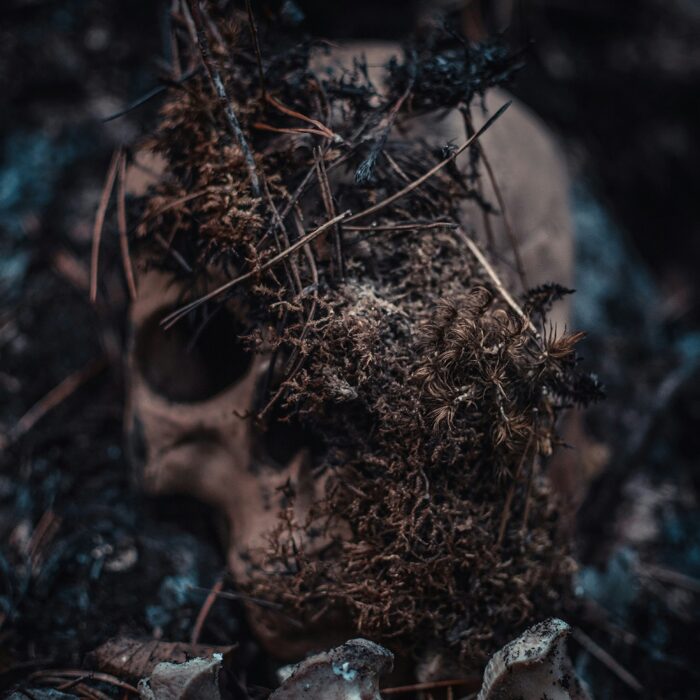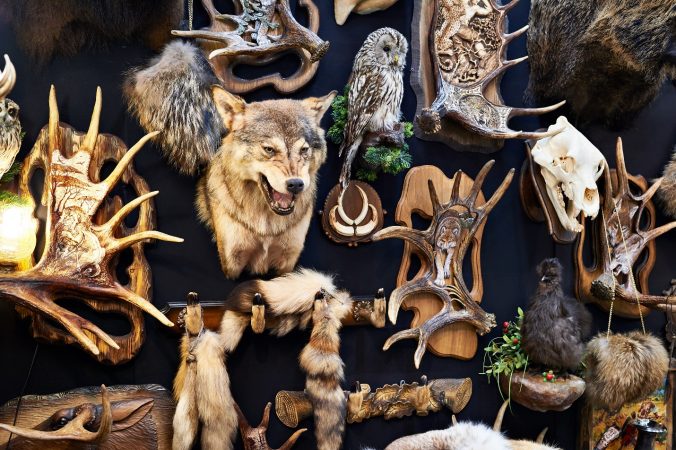You have no items in your cart. Want to get some nice things?
Go shoppingYou wonder if she’s dead. The girl in that photograph. The well-known one—photograph, that is, not girl. She’s lying at the centre of a caved-in car roof, buckled metal ripples out from under her. It’s a perfect composition; a delicate balance of soft flesh and sharp steel. You see it a lot. Replicas, mostly. Music videos and haute couture fashion spreads, that kind of thing. And there’s a particularly famous silk-screen print. It’s old. The photograph that is. And the car. Not the girl, though; she’s very young.
But is she dead? It’s important that you know this. And no, you don’t mean dead outside the photograph. No. That would diminish it, wouldn’t it? Lessen its beauty. Admit it. You’d be disappointed if, after the shutter snapped, a male voice shouted “that’s a wrap”, and the girl sat up, stretched her stiff limbs, and stepped down from the car roof into a long, unremarkable life that ended one distant night in silver-haired sleep. Yes, you would. But if death were closer… to her, to the photo… If, minutes after this final flash, perhaps as she dashed to meet her beau at their favourite seafood restaurant, she was rammed to immediate death by an overzealous squad car, then the photo retains some value. But it decreases, doesn’t it, the longer death prowls the edge of the frame. Even if it’s only for a day or two, or however long it takes for bacteria lurking in undercooked oysters to kill an otherwise healthy human. There’s a ratio to these things: beauty, time, death. So, you concede, a final photo of a soon-to-be-dead girl is all-well-and-good. But for it to be beautiful, you need to know.
For it to be beautiful, you need to know that the car, a limousine, is parked on New York’s 34th street, a little after 10 on the morning of May 1st, 1947. You need to know that the observation deck on the 86th floor of the Empire State Building is 1,040 feet high and that a ticket is required to access it. You need to know that she purchased a ticket. For the photograph to be beautiful, you need to know that it was taken about four minutes after her landing. You need to know that she was twenty-three when she jumped.
Can you look at it? Do you flinch? It’s bloodless, after all. No bones piercing skin, no sign of solid turned to liquid–although reports say that when they tried to move it, the body was little more than mush held together by clothing. A meat scarecrow. But you can’t see any of that. And perhaps this disappoints you a little. But the body hadn’t settled long enough to dissolve when photography student, Robert Wiles, snapped its image. He’d be drinking coffee in a local diner when he heard whatever sound is made when human meets steel at top speed. LIFE Magazine’s Picture of the Week. Page forty-three of the May 12th issue. “The Most Beautiful Suicide.”
Her name was Evelyn McHale.
She wasn’t beautiful.
Only the photograph is beautiful.
An exquisite shot; as artful an arrangement as you could expect to see in an edgy advertising campaign, the kind found only in those thick, heavily scented magazines. The slightly elevated camera eye allows us the full length of the upside-down body and the wrinkled steel spreads from beneath, as if she’s simply flopped backwards, after a long day, on to a bed of black metal. About her head and to the right of her feet are white dots, glass fragments that give sound to the image. The sound of calamity; the smashing of a million, million cells in a single instant. The sound of hysteria. These same tiny dots give it movement; a bounce-less energy of down, of plunge, of end. Delicate and devastating. Like one of those slow-motion films of a water drop crashing onto a leaf.
At the top edge, there’s the blurred suggestion of people. They’re very close. All men, it seems. Trench coats and cigarettes, fedoras at cocky angles. Officials perhaps? The type called to deal with situations like this. But then you remember: four minutes. There’s been no time for police or tape or procedures or statements or questions or identification or loved ones. So, these men are just there. De-mobbed veterans, stormers of Normandy, liberators of Belsen. They’ve seen worse. Perhaps these fuzzily rendered Joe Publics turn to each other, and silently decide: Let’s start at the top. With her feet.
Shoeless. Though shoes seem to be the only item of clothing lost during her free-fall. A flayed stocking drapes her right foot, and the elasticated top of its partner is visible under her left knee. Of course, we wouldn’t normally be able to see this—her knee that is, but in this prone position, her skirt is hitched a little higher than usual. Her ankles are demurely crossed. There is a suggestion in some reports that this was done by the first police officer on the scene, Patrolman John Morrissey. To preserve her dignity.
Moving our eye down the photograph and up her body … her legs are solid. Strong calves, meaty, not fat; brimming with mid-western vigour. Travelling up the curve of her thigh, the suggestion of fullness, of sturdiness is again apparent. The phrase “good stock” comes to mind. But then the curve streamlines, cello-like, to the hips and what was robust becomes voluptuous. And not just because of those Mansfield-ian proportions. No. See the hole? Just above the crotch? A missing button. A burst of sex. Like water gushing from a ruptured pipe.
Strangely—and we’ve arrived at the breasts now—this sexual surge doesn’t continue. Maybe they’re rendered flat by the angle of the lens, or perhaps her bra is not engineered to prop them up. Maybe it’s her “Thursday” bra; thrown on without thought because it’s comfortable and, well, who’s going to see it? Or perhaps her breasts just are small. Now is not the time, the Joe Publics agree, to consider such things.
But lifting our eyes to the throat, we note a different sexual charge. Not overt, like the burst button. More vulnerable, exposed. The slight incline of her chin suggests she’s offering it, her throat that is, inviting it to be kissed, bitten, or licked. And her lipsticked-lips feel wet. Open, mid-pant, a response to a mildly erotic dream. Then there’s the pearls. Perhaps it’s because they’re so close to that meaty lower lip that they too seem so wet and fleshy. Or maybe pearls are always like that. Brutal too. Snatched. Rewards.
A gift, maybe. Let’s suppose they are. From the beau. His name is Barry Rhodes. Barry Rhodes of Eastern Pennsylvania who, at the second this photograph is taken, believes that in one month, Evelyn McHale will be—as she has agreed to be— his wife. Barry Rhodes, who first saw Evelyn at a New Year Party. Who—we might imagine—watched her from his own empty table. Watched her laugh too late, too loud, too soon; watched her square-peg-self search for a way into an invisible round hole; watched her eager smile grow evermore desperate; watched it freeze, then thaw, melt and drip from that round, heavy chin. Every time she tried to talk, drip, to dance, drip, drip, to sit, to do, to be, to fit drip, drip, drip. Perhaps Barry Rhodes, engineering student, living at home with his mother, watched Evelyn McHale struggle into an ill-fitting coat, and stumble on ill-fitting shoes and then, certain no one else was watching her, thought to himself: This is the ill-fitting girl I’ve been watching out for.
Let’s imagine him, kind, colourless, Barry Rhodes, presenting his girl with this string of pearls at their favourite seafood restaurant. Let’s imagine he thought it witty. And let’s take the liberty to reanimate Evelyn McHale. To sit her upright, alive and unremarkable, her knees covered. In her hands, a velvet box. There they are, sumptuous and white against red fabric.
“Y’know, the way these things are formed, Evelyn… so interesting,” white-bibbed Barry explains, “They’re these irritants. Like a splinter, or a spec of grit in your eye.” He picks up a shell from his plate, points to the pink, lip-like animal inside, “so this little guy, he needs to protect himself, right, from this infection. So, he—or she, I guess—secretes this stuff from its glands. Layers and layers of this mucus stuff. All around this infection. To isolate it, y’know?”
She tries to hide her distaste, her instinct to recoil from the strangely obscene animal that disappears down his convulsing throat.
“So when they prize the shell, the oyster’s shell, open,” his chin glistens with exquisite juice and she focuses her eyes on the contents of the box, “they find…”
Tiny balls of mucus, she says. Then she lifts them, dangles them in the candlelight, and she fancies she can see the source. The piece of grit, the splinter, the cut, the ache, the pain at its centre. Tiny balls of infection, she says. Then she notices his open mouth and the familiar jolt of shame makes her eyes water and her fists clench, because she tries, she does. She tries and tries and tries but still… …I’m sorry, I didn’t mean…
He chuckles then, ‘No, no you’re right,’ he says, because he loves her and is happy to retune his pitch to hers. “Pure Timeless Chic is how the sales girl put it! Ha! Whatever that means!”
She puts them on to please him, and feels their sickness against her throat. He smiles. ‘The girl said they’re the same type Lana Turner wears.’ He pays the bill and places her ill-fitting coat on her shoulders. ‘And y’know Evelyn, every woman should have a set of pearls.’
Gentle, well-meaning Barry Rhodes, who we have to imagine didn’t immediately the recognise the elegant beauty in the photograph as his Evelyn. Barry Rhodes, who’d rolled out and off her the night before she jumped; who then re-adjusted his flannel pyjamas, and planted a brisk but tender kiss on her cheek, before scuttling back to the twin bed made daily by his mother.
“’Night, Evie. Early start in the morning.”
Barry Rhodes, who can’t recall their parting words because she’d had to dash to make the 7 am train from his home in Eastern to Grand Central station, or else be late to her bookkeeping job in Lower Manhattan. Barry Rhodes, who saw no signs, and had no clue, who told investigators that she was as happy as any young girl about to be married. Barry Rhodes, who spent the remainder of his eighty-five marriage-less years, wondering just how happy that was supposed to be.
She’s clutching them – clutch is the verb used with pearls. In a white gloved hand. Turner-esque elegance with a smatter of Davis-ian melodrama. And, could we venture, a soupcon of Monroe’s innocence, mixed with a hint of Baccall-ian cynicism? Yes, there in the combination of raised chin and parted lip. A naiveté and a seductiveness. The virgin and the whore. Or maybe it’s confusion we see. Maybe she’s wondering why her descent is so rushed; why she’s hurtling like a brick and not billowing like a leaf. Why she doesn’t feel light, doesn’t feel relieved of her cumbersome mass like she expected. Because for god’s sake, that’s why she opted for this method! Why she hasn’t slashed or swallowed, gassed or garrotted. Maybe she’s wondering about why the windows of this, the tallest man-made structure on earth, this mammoth feat of engineering and imagination, watch her fall with such icy disregard. Will they remain closed? Will no one try to catch her?
Maybe she’s surprised at just how easy it is to die.
Turns out all you have to do is buy a ticket.
It’s in her purse. The ticket to the observation deck. In her purse, next to her carefully folded, ill-fitting coat, 1,040 feet above the limousine roof. They’re given to a Uniformed Man who rifles through them to find the answer. The note isn’t addressed to anyone in particular, so perhaps Uniformed Man feels that he is as entitled to read it as if his name were on the envelope. He reads:
I have too many of my mother’s tendencies…
At this time, Uniformed Man doesn’t know about mother. He doesn’t know that mother is the former wife of father; that father’s name is Vincent McHale, that mother’s name is Unknown; that Unknown mother is mother to all seven of Vincent McHale’s children, the sixth of which was named Evelyn; that Unknown mother called her Evie; and that one day something happened and Unknown mother was gone. And when she left, she left all seven of her children. But her tendencies, these she left only with her sixth born. Tendencies: tender gifts wrapped in complex codes, in cells, in blood, in hair, bones, and proportions of hip, thigh, and breast. Little hidden infections.
Let’s suppose one day, before Unknown mother disappeared, she invited her little Evie into the dark, smoky boudoir she seldom left and which stank of her unwashed illness. Perhaps Little Evie was nervous to enter this room, perhaps she sensed its danger. Imagine Little Evie. Number 6, hand-me-down, unnoticed. Imagine Unknown mother, tangled in grey sheets on an unshared bed. Imagine Little Evie’s round face held fast against Unknown mother’s bony chest. And now imagine Unknown mother apologize for being:
‘a little late… I should have told you a while ago… about the things that happen….to young girls… about what will happen to you…’
Picture Little Evie, watching the wet drops that fall from Unknown mother’s face landing on stiff sheets with an audible plop.
‘… but I’ve not been very well and… Plop, plop…things are going to happen … to you…Plop, plop…and you need to be…prepared.’ Plop, plop.
And Evie wants to wrestle out from Unknown mother’s grasp, to run from her rank body and poisoned breath. And she wants to tell Unknown mother that Big Sister Helen has already explained everything. That she did so after finding panic-stricken Little Evie stuffing red stained sheets into the garbage like she had been for months. And now Little Evie wants to tell Unknown mother to save her foul breath, but then Unknown mother’s voice tolls, cold and clear.
‘…I worry about you, Evie…plop, plop…You’re just like me.’
Perhaps around Unknown mother’s neck, there are a string of pearls. Perhaps she says to her Little Evie, “Do you know why they make them, Evie? Do you know why the oyster makes pearls?” Perhaps Unknown mother bestows these pearls, along with her tendencies, upon her sixth born. And perhaps Unknown mother, flipping idly through the May 12th, 1947 issue of LIFE Magazine, is arrested by the image of “The Most Beautiful Suicide” on page forty-three, but doesn’t recognize her not-so-beautiful daughter until she reads her name in the accompanying caption. Perhaps Unknown mother clicks her tongue knowingly. Or perhaps where she is, she doesn’t have access to things like magazines.
Perhaps Uniformed Man, note in hand, imagines a scene similar to the one you’ve just imagined. Maybe he nods and thinks; That explains that! Imagine him reading on, deciphering hasty blue scribbles, doodled whirls, pressed hard into the paper. Imagine the note is covered in them, these inky tornados, mini storms surrounding a polite request for cremation, and an emphatic plea for no one in or out of the family to see any part of me. Of course, Uniformed Man has no idea that it is far, far too late for that.
Too late because Robert Wiles had the presence of mind to grab his camera from the lunch counter he was sitting at when he heard death’s unmistakable smash. Robert Wiles who had simply raised the Kodak Six-20 above his head at an angle that was either instinctive or accidental, and depressed the exposure button; who was, for our imagined purposes, an indifferent student of photography in whom his instructors discerned no flash of remarkability; who entered his bath-cum-developing room with no visual memory of the dead girl on the car. Robert Wiles, who stood in the chemical darkness, congratulating himself on his fine artistic eye, as the image emerged in fluids and became memory.
Yep, the Joe Publics think as they sit at kitchen tables and snip a rectangular hole on page forty-two of the May 12th issue of LIFE Magazine, That’s what I saw, exactly as I saw it. Then they stick it into books scraped with other things they saw at Iwo Jima and Omaha Beach. Yep, that’s what I saw.
It’s left to Big Sister Helen to identify the messy remains with her own eyes. She has to hurry because the neighbour watching Little Bobby has to go to work at 3 and she couldn’t very well let a small boy see his aunt’s dead body now, could she? Perhaps Big Sister Helen is shocked. Perhaps she is not shocked. Perhaps she always knew that she, Evelyn, that is, had too many of their mother’s tendencies. Perhaps she’s distraught at the site of her sister’s pulverized remains. Perhaps she’s seen worse.
Perhaps she is given a bag. Plastic, transparent: Items Found About the Person of the Deceased. Clothing has been incinerated of course; nothing to be gained from the fibres that held Evelyn’s innards in. The stockings too. Her shoes, well there’s a bit of a mystery there, ma’am, Another Uniformed Man explains. He hands over the bag of Evelyn, and Big Sister Helen thinks: Shouldn’t there be some sort of ceremony? Turns out she just needs to sign and date here, and initial here and here.
Let’s imagine Big Sister Helen as the type of person who waits for the privacy of her own home to go through the belongings of a deceased sibling. That she removes a pearl necklace from the see-through bag on her kitchen table. Maybe Big Sister recognizes Unknown mother’s pearls. Maybe she holds them up to the light, watches them blink with tired lustre and thinks: These really should’ve be mine, anyway.
Or maybe she assumes they’re a gift from Barry Rhodes. Will he want them back? she wonders? Or would it be in bad taste to…
And no, she never once wonders how these creamy mucus balls are formed.
But let’s also think practically; it’s very likely that the necklace had to be cut from a stiffened clutch or pulpy neck. So maybe unfettered pearls spill from the bag onto the table. Maybe they bounce, scatter and roll and Big Sister Helen scrambles to retrieve them before Little Bobby one shoves one in his mouth. But still, maybe for weeks, for months, for years —long after Big Sister and Bobby are gone from that kitchen in that house—tiny balls of grit are found lurking in dusty corners and crevices.
And now you know. The girl on the car is dead. Indelibly so. All you need to do is purchase a ticket to see for yourself. Yes, for the bargain price of $20 (plus tax) —$10 on Good Friday— you can examine every inch of Evelyn McHale’s beautiful death. And you think about it. About buying a ticket. Of sitting there in front of huge silk-screen prints, and absorbing this piece of art. And while you do, you might think about Robert Wiles, and you might wonder if the money he made from his photograph was enough for him never to have to publish another one ever again. Or was he too overcome with guilt for having foiled Evelyn McHale’s one desire for self-obliteration to continue as a photographer? Maybe. Or maybe he just wasn’t any good. And then you wonder if Barry Rhodes ever spent $20 to see his Evelyn in her pearls? Or Big Sister Helen, or Little Bobby. Maybe even Unknown mother. And then you wonder: what did happen to those pearls?
And so maybe you go there. Maybe you spend $20 to look at her for as long as you want —between the hours of 10 and 5.
Please make sure no one in or out of my family sees any part of me.
Could you look? Would you flinch? There’s a joy in it, isn’t there? In the flinch. Because she really is dead, you know. In the photograph. And out of it. Can you see them? Her mother’s tendencies? Maybe in the burst button at her crotch, or in the wet, parted lips? Perhaps in the string of tiny infections around her neck.
She is not beautiful.
Only the photograph is beautiful.

About Caroline Greco
Originally from Liverpool, Caroline Greco lives and writes in the Chicago area. Her work has appeared in Litro, 34th Parallel, and STORGY among others.




